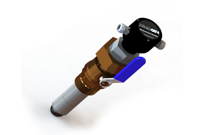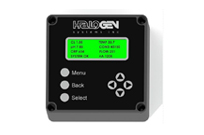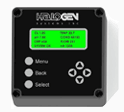
PRODUCT
home > products > BWTS


Ballast Water Total Residual Oxidant Sensor (TRO)
-
Seawater is a very challenging environment for chlorine sensors. Most cannot handled the corrosive environment and require waste streams, reagent feeds, membranes, electrolytes and frequent maintenance. HSI’s Total Residual Oxidant Sensor's breakthrough design is both simple, reliable and requires very little maintenance. HSI has developed a technology platform for measuring total oxidants (chlorine/bromine) that integrates four key measurement parameters, Amperometric Chlorine (or bromine in seawater), ORP, Temperature and Conductivity into a reliable, synergistic system.
-
This new TRO sensor is capable of reagentless operation in seawater for extended periods without calibration and has significant advantages over the Oxidation Reduction Potential (ORP) method. Amperometry is an electrochemical technique that measures the change in current resulting from chemical reactions taking place on the electrodes. The generated current is proportional to the TRO concentration. A typical amperometric sensor consists of three electrodes; an anode, cathode and a reference electrode. The 3-electrode bare electrode design generally makes the measurements more stable and provides longer life for the working and reference electrodes. There are no membranes to clog or replace.

Key Features
-
- • Measures 4 Water Parameters
- • Free Chlorine or Bromine (TRO), ORP, Conductivity, Temperature.
- • Rugged design solid-state sensor without gels or glass (no pH)
- • No membranes to clog or replace
- • Reagentless
- • No waste stream
- • Resistant to biofouling






